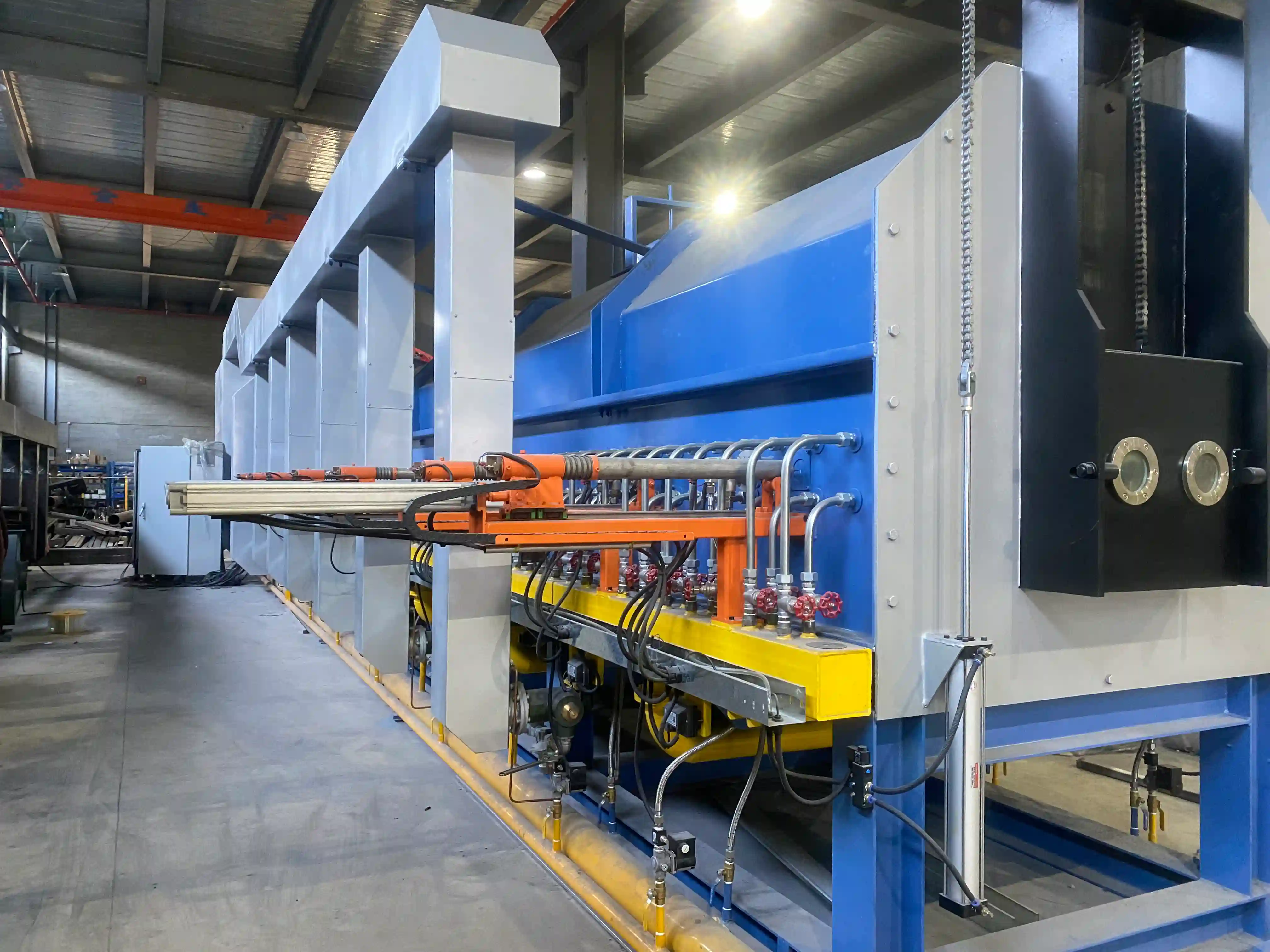What Is an Aluminum Rod Furnace and Why Is It Essential in Metal Processing?
2024-11-12
In the world of metal processing, the equipment used to shape and refine materials is just as important as the raw materials themselves. One such critical piece of equipment is the aluminum rod furnace, which plays a key role in the production of aluminum rods, a vital material in various industries. But what exactly is an aluminum rod furnace, and why is it so important in the manufacturing process? In this blog, we’ll explore the workings, applications, and benefits of aluminum rod furnaces.
What Is an Aluminum Rod Furnace?
An aluminum rod furnace is a specialized industrial furnace used for the heat treatment and melting of aluminum ingots or scrap material to produce aluminum rods. These furnaces are designed to achieve high temperatures required to melt aluminum and refine it into a more uniform material that can be easily drawn into rods or wires.
The furnace typically operates by using either gas or electric heating elements, depending on the specific model. These furnaces are designed to maintain a consistent and controlled temperature throughout the heating process, ensuring the aluminum achieves the necessary properties for further manufacturing.
How Does an Aluminum Rod Furnace Work?
The operation of an aluminum rod furnace is based on the principles of high-temperature heating and precise temperature control. Here’s a general breakdown of how it works:
1. Loading the Furnace: The raw aluminum material, usually in the form of ingots, scrap, or billets, is loaded into the furnace. These materials are often recycled, making the process more environmentally friendly.
2. Heating: The furnace uses its heating elements to raise the temperature to a specific level (often around 660°C to 700°C, the melting point of aluminum). The furnace provides a uniform heating environment to ensure even melting.
3. Melting Process: As the aluminum heats up, it melts into a liquid state. During this stage, impurities in the aluminum may also be removed, and the material can be alloyed with other metals if necessary to achieve the desired properties.
4. Casting: Once the aluminum reaches the correct molten state, it is poured into molds to form rods or wires. The rods are then cooled and solidified into the desired shape.
5. Cooling and Extraction: After casting, the aluminum rods are cooled to room temperature before they are extracted from the furnace for further processing.
Why Is an Aluminum Rod Furnace Important?
Aluminum rod furnaces are essential in the aluminum manufacturing process for several key reasons:
1. Efficiency in Production: By providing a controlled environment for melting and refining aluminum, these furnaces allow manufacturers to produce high-quality aluminum rods at scale. The efficient use of energy and resources is key in large-scale aluminum production.
2. Quality Control: The ability to precisely control the temperature and melting process ensures that the aluminum rods have the desired properties, such as uniformity, strength, and minimal impurities. This is crucial for applications where aluminum rods are used in electrical wiring, construction, and manufacturing of various products.
3. Versatility: Aluminum rod furnaces can be used to melt a variety of aluminum alloys and produce different rod diameters or wire forms depending on the needs of the manufacturer. This versatility makes them valuable for industries that require specific aluminum grades for their products.
4. Recycling and Sustainability: Many aluminum rod furnaces are designed to handle recycled aluminum, which is a more sustainable approach to manufacturing. Recycling aluminum reduces the need for raw materials, lowers energy consumption, and helps reduce environmental impact. This makes aluminum rod furnaces an important part of the growing trend toward sustainable manufacturing practices.
Applications of Aluminum Rods
The aluminum rods produced using these furnaces have a wide range of applications across various industries:
- Electrical Industry: Aluminum rods are widely used in the production of electrical wires and cables due to their excellent conductivity and lightweight properties.
- Construction and Architecture: Aluminum rods are used in structural applications, such as reinforcement for concrete, as well as in the creation of windows, doors, and frames.
- Automotive Industry: Aluminum rods are used in the production of automotive parts, such as body panels, engine components, and heat exchangers, thanks to aluminum’s light weight and durability.
- Consumer Products: Aluminum rods are also used in the production of a variety of consumer products, including cookware, furniture, and packaging materials.
Types of Aluminum Rod Furnaces
There are several types of aluminum rod furnaces, each designed to meet specific needs based on the scale of production, energy requirements, and desired material quality. Some common types include:
- Gas-Fired Furnaces: These furnaces use natural gas or propane to generate heat. They are cost-effective for larger production volumes and are commonly used in foundries and large-scale aluminum production facilities.
- Electric Furnaces: These furnaces use electric heating elements to generate heat, offering greater temperature control and energy efficiency. They are often used in smaller operations or where higher-quality aluminum products are required.
- Induction Furnaces: Induction heating uses electromagnetic fields to heat aluminum quickly and efficiently. These furnaces are ideal for high-speed melting and are often used for continuous casting processes.
Conclusion
Aluminum rod furnaces are critical in the production of high-quality aluminum rods, which are used in a wide array of industries, from electrical and automotive manufacturing to construction. These furnaces offer the precision, efficiency, and versatility needed for modern aluminum production, making them an essential component in any operation that involves aluminum processing.
With the increasing emphasis on sustainability and recycling, the role of aluminum rod furnaces will continue to evolve, helping manufacturers meet growing demand for high-quality, eco-friendly aluminum products. Whether it’s melting scrap aluminum or producing custom alloys, an aluminum rod furnace remains an indispensable tool in the world of metal manufacturing.



